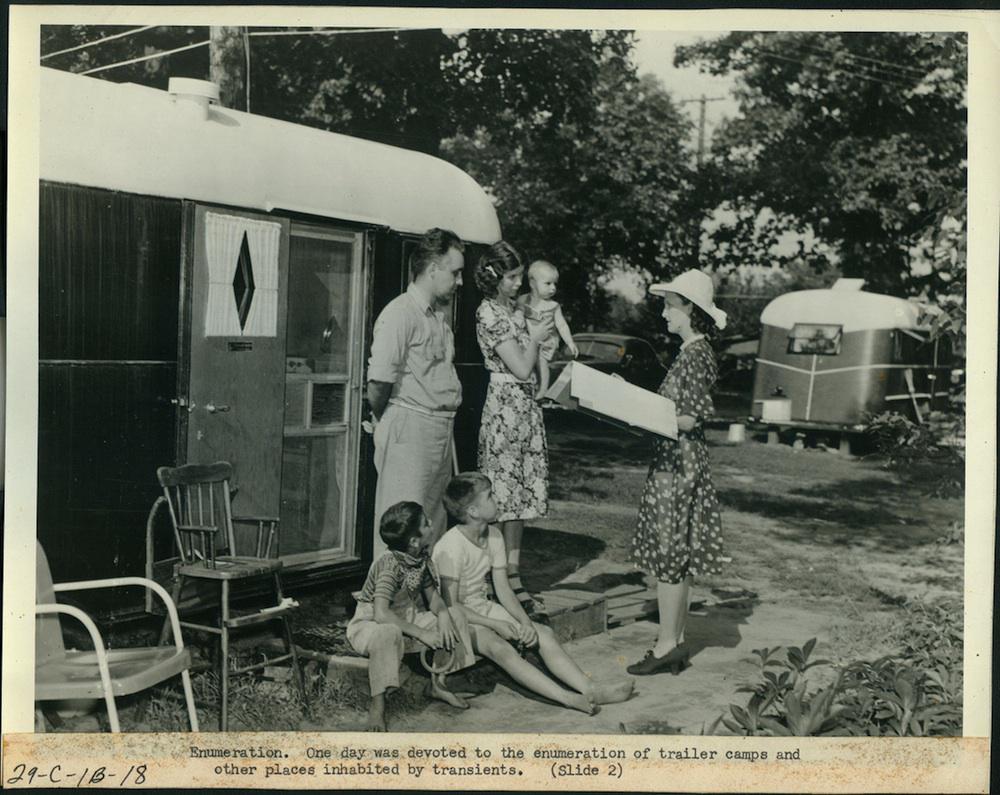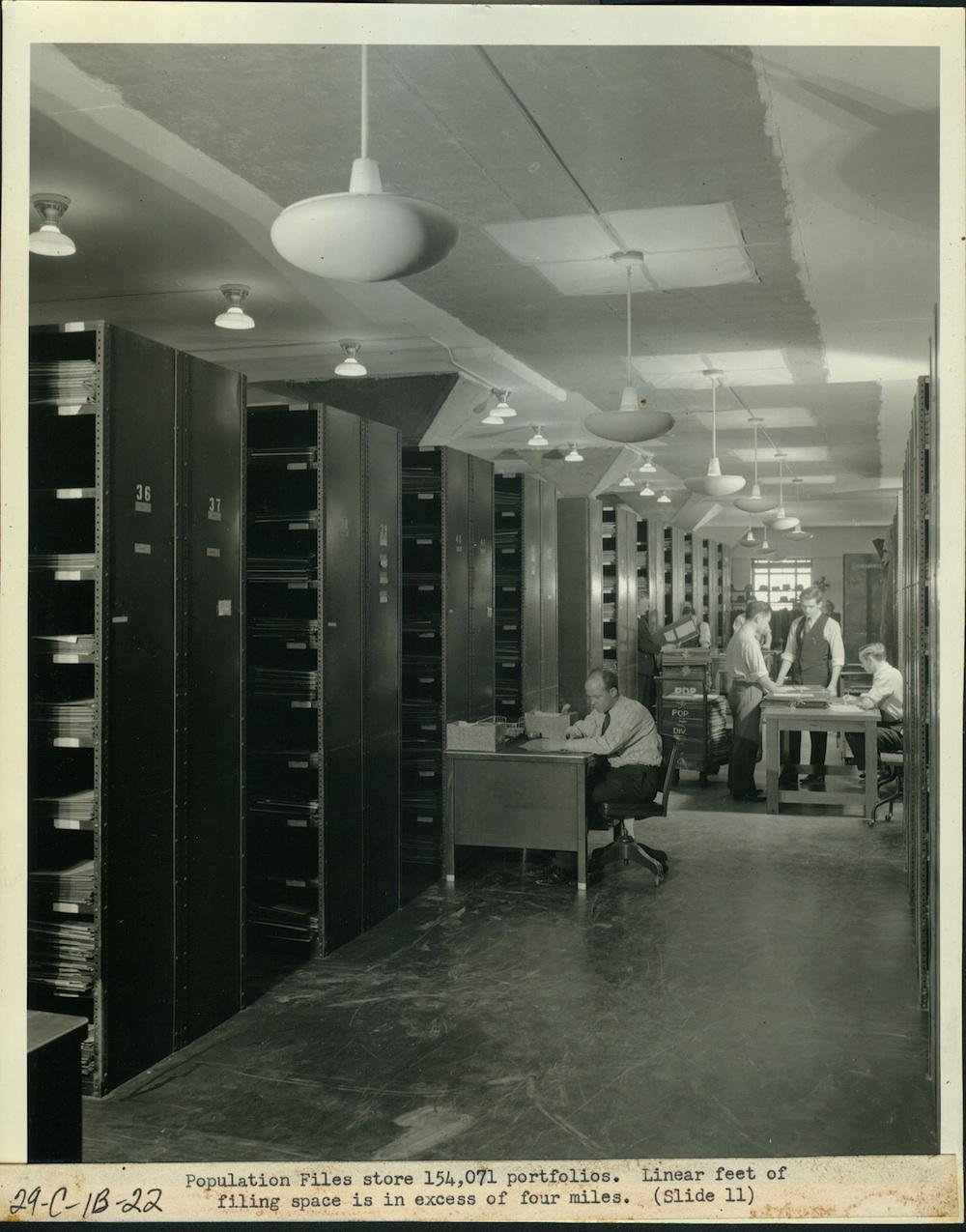The Vault is Slate’s history blog. Like us on Facebook, follow us on Twitter @slatevault, and find us on Tumblr. Find out more about what this space is all about here.
The National Archives has a great Flickr set chronicling the taking and processing of the 1940 Census. Here are a few of those images; the whole group adds more detail to the narrative that’s outlined here.
The government photographers documenting the census focused on the diversity of locations that census enumerators visited in early April, 1940. In the tableaus they chose to capture, the photographers represented everyday American life as rich in variety. The images—of an enumerator on a dogsled, for example—also celebrated the Census’ thoroughness of reach.
In the second group of images, photographers clocked the progress of the workforce charged with processing the data that the enumerators had collected. The emphasis in these images is on the massiveness of the data being crunched (“linear feet of filing space in excess of four miles”; an occupational coder who might produce up to 6,000 lines of information per day).
The 1940 census counted 132.2 million residents. New standard questions that year evaluated the effects of the Depression, asking about unemployment, income, and levels of schooling.
Results of the 1940 census are available online here.

National Archives.
The Census of 1940 made a special point of counting people who had been uprooted by the Depression.

National Archives.

National Archives.
The startling caption to this photo would seem to argue that the census work force was segregated along racial lines—surprising because Herbert Hoover desegregated the Census Bureau in the 1920s, during his time as Secretary of Commerce. It’s possible, however, that the temporary laborers used to process the 1940s census might have worked in racially segregated arrangements.

National Archives.

National Archives.
As this image shows, the 1940 Census used IBM tabulating machines, but it wasn’t the first census to draw on mechanical means of data processing. The government used Pantographic punch cards for this purpose as early as 1890.

National Archives.